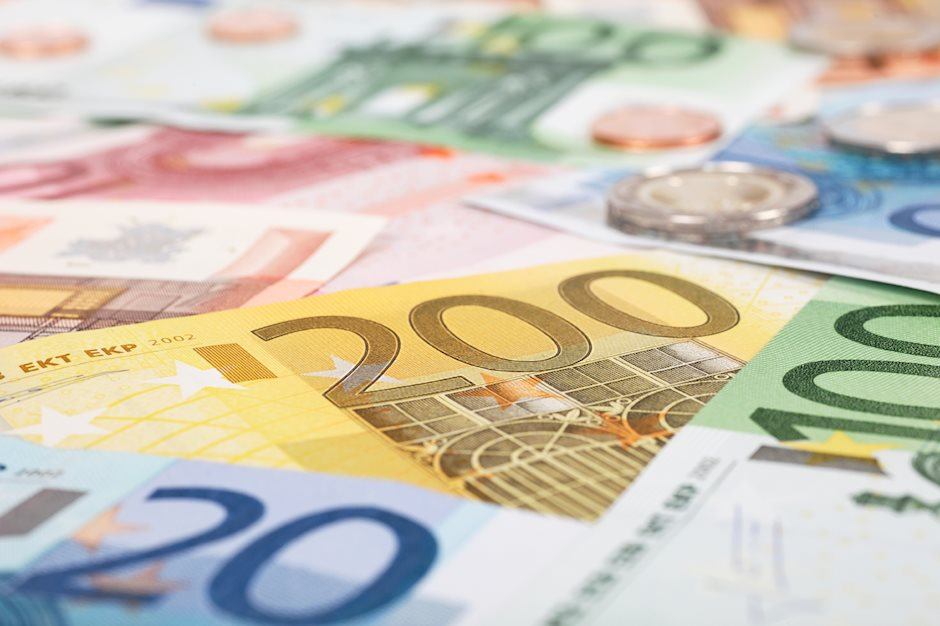Created
: 2024.10.22














![]() 2024.10.22 14:40
2024.10.22 14:40
The EUR/USD pair enters a bearish consolidation phase during the Asian session on Tuesday and oscillates in a range around the 1.0820 region, just above its lowest level since early August touched the previous day. The near-term bias, meanwhile, seems tilted firmly in favor of bearish traders and suggests that the path of least resistance for spot prices remains to the downside.
Data released on Monday showed that producer prices in Germany - the Eurozone's largest economy - fell for the first time in seven months in September and the annual rate of deflation picked up pace. This, in turn, lifted bets for further monetary easing by the European Central Bank (ECB). Furthermore, ECB policymaker Gediminas Simkus said that the ECB may need to reduce its key interest rate even further below the "natural" level if a fall in inflation becomes entrenched. This might continue to undermine the shared currency, which, along with a bullish US Dollar (USD), validates the negative outlook for the EUR/USD pair.
The USD Index (DXY), which tracks the Greenback against a basket of currencies, stands tall near its highest level since early August amid growing acceptance that the Federal Reserve (Fed) will proceed with modest interest rate cuts. Apart from this, concerns about the potential for rising deficit spending after the November 5 US presidential election pushed the US Treasury bond yields to their highest levels in almost three months. This, along with persistent geopolitical risks, is seen underpinning the safe-haven buck, which, in turn, supports prospects for a further near-term depreciating move for the EUR/USD pair.
There isn't any relevant market-moving macro data due for release from the Eurozone on Tuesday, while the US economic docket features the Richmond Manufacturing Index. This, along with Philadelphia Fed President Patrick Harker's scheduled speech, might influence the USD price dynamics and provide some impetus to the EUR/USD pair. Nevertheless, the aforementioned fundamental backdrop suggests that any attempted recovery might still be seen as a selling opportunity and runs the risk of fizzling out rather quickly.
The European Central Bank (ECB) in Frankfurt, Germany, is the reserve bank for the Eurozone. The ECB sets interest rates and manages monetary policy for the region. The ECB primary mandate is to maintain price stability, which means keeping inflation at around 2%. Its primary tool for achieving this is by raising or lowering interest rates. Relatively high interest rates will usually result in a stronger Euro and vice versa. The ECB Governing Council makes monetary policy decisions at meetings held eight times a year. Decisions are made by heads of the Eurozone national banks and six permanent members, including the President of the ECB, Christine Lagarde.
In extreme situations, the European Central Bank can enact a policy tool called Quantitative Easing. QE is the process by which the ECB prints Euros and uses them to buy assets - usually government or corporate bonds - from banks and other financial institutions. QE usually results in a weaker Euro. QE is a last resort when simply lowering interest rates is unlikely to achieve the objective of price stability. The ECB used it during the Great Financial Crisis in 2009-11, in 2015 when inflation remained stubbornly low, as well as during the covid pandemic.
Quantitative tightening (QT) is the reverse of QE. It is undertaken after QE when an economic recovery is underway and inflation starts rising. Whilst in QE the European Central Bank (ECB) purchases government and corporate bonds from financial institutions to provide them with liquidity, in QT the ECB stops buying more bonds, and stops reinvesting the principal maturing on the bonds it already holds. It is usually positive (or bullish) for the Euro.
![]()
Created
: 2024.10.22
![]()
Last updated
: 2024.10.22

FXStreet is a forex information website, delivering market analysis and news articles 24/7.
It features a number of articles contributed by well-known analysts, in addition to the ones by its editorial team.
Founded in 2000 by Francesc Riverola, a Spanish economist, it has grown to become a world-renowned information website.
We hope you find this article useful. Any comments or suggestions will be greatly appreciated.
We are also looking for writers with extensive experience in forex and crypto to join us.
please contact us at [email protected].
Disclaimer:
All information and content provided on this website is provided for informational purposes only and is not intended to solicit any investment. Although all efforts are made in order to ensure that the information is correct, no guarantee is provided for the accuracy of any content on this website. Any decision made shall be the responsibility of the investor and Myforex does not take any responsibility whatsoever regarding the use of any information provided herein.
The content provided on this website belongs to Myforex and, where stated, the relevant licensors. All rights are reserved by Myforex and the relevant licensors, and no content of this website, whether in full or in part, shall be copied or displayed elsewhere without the explicit written permission of the relevant copyright holder. If you wish to use any part of the content provided on this website, please ensure that you contact Myforex.
Myforex uses cookies to improve the convenience and functionality of this website. This website may include cookies not only by us but also by third parties (advertisers, log analysts, etc.) for the purpose of tracking the activities of users. Cookie policy